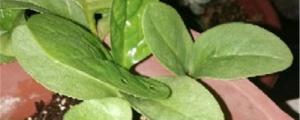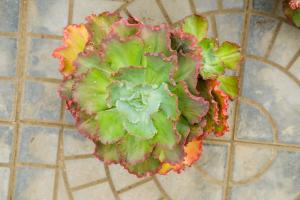How Long Can a Jade Plant Survive Without Water?
Jade plants, also known as Crassula ovata, are a popular houseplant choice for their unique, glossy, and thick leaves. They are relatively easy to care for and have the ability to survive in a variety of growing conditions. However, one question that many jade plant owners ask is: how long can a jade plant survive without water?
The Basics of Jade Plant Care
Before answering this important question, it's essential to understand the basics of jade plant care. These plants require well-drained soil, plenty of sunlight, and infrequent watering. Overwatering can quickly lead to root rot, which is a common problem for jade plants.
Experts recommend letting the soil of a jade plant dry out entirely before watering it again. Depending on factors such as humidity levels and temperature, this can range from once every 2-4 weeks in the warm months to every 4-6 weeks during the winter.
Surviving Without Water
So, back to the question at hand: how long can a jade plant survive without water? The answer to this question depends on several factors, including the size of the plant, its overall health, and environmental conditions. Generally speaking, jade plants can survive for weeks or even months without water, but this isn't ideal for their longevity.
Initially, a jade plant will show signs of dehydration, such as drooping leaves or a slight darkening in color. However, to avoid long-term damage to the plant, it's best to avoid letting it get to this point.
Smaller jade plants or those in pots that are smaller than their root system will require more frequent watering, while larger plants or those in pots bigger than their roots can go longer periods without water. It's essential to keep a close eye on your jade plant and adjust its watering schedule accordingly.
How to Revive a Dehydrated Jade Plant
If your jade plant has gone without water for too long and is displaying symptoms of dehydration, there are steps you can take to revive it. First, inspect the soil to see if it's dry or overly moist. If it's too dry, give the plant a good watering, but be sure not to overdo it. If it's too moist, allow the soil to dry out entirely before watering again.
You can also consider trimming any brown or dead leaves to promote new growth. Once your jade plant has had a good watering and trimmed back, be sure to monitor it closely and follow a proper watering schedule to avoid future problems.
Conclusion
In conclusion, jade plants are hardy and can survive for weeks to months without water, but it's best to avoid letting them get to a point of dehydration. Always monitor the soil and adjust the watering schedule as needed to promote healthy growth and prevent issues such as root rot or dehydration.

 how many times do yo...
how many times do yo... how many planted tre...
how many planted tre... how many pine trees ...
how many pine trees ... how many pecan trees...
how many pecan trees... how many plants comp...
how many plants comp... how many plants can ...
how many plants can ... how many plants and ...
how many plants and ... how many pepper plan...
how many pepper plan...

































